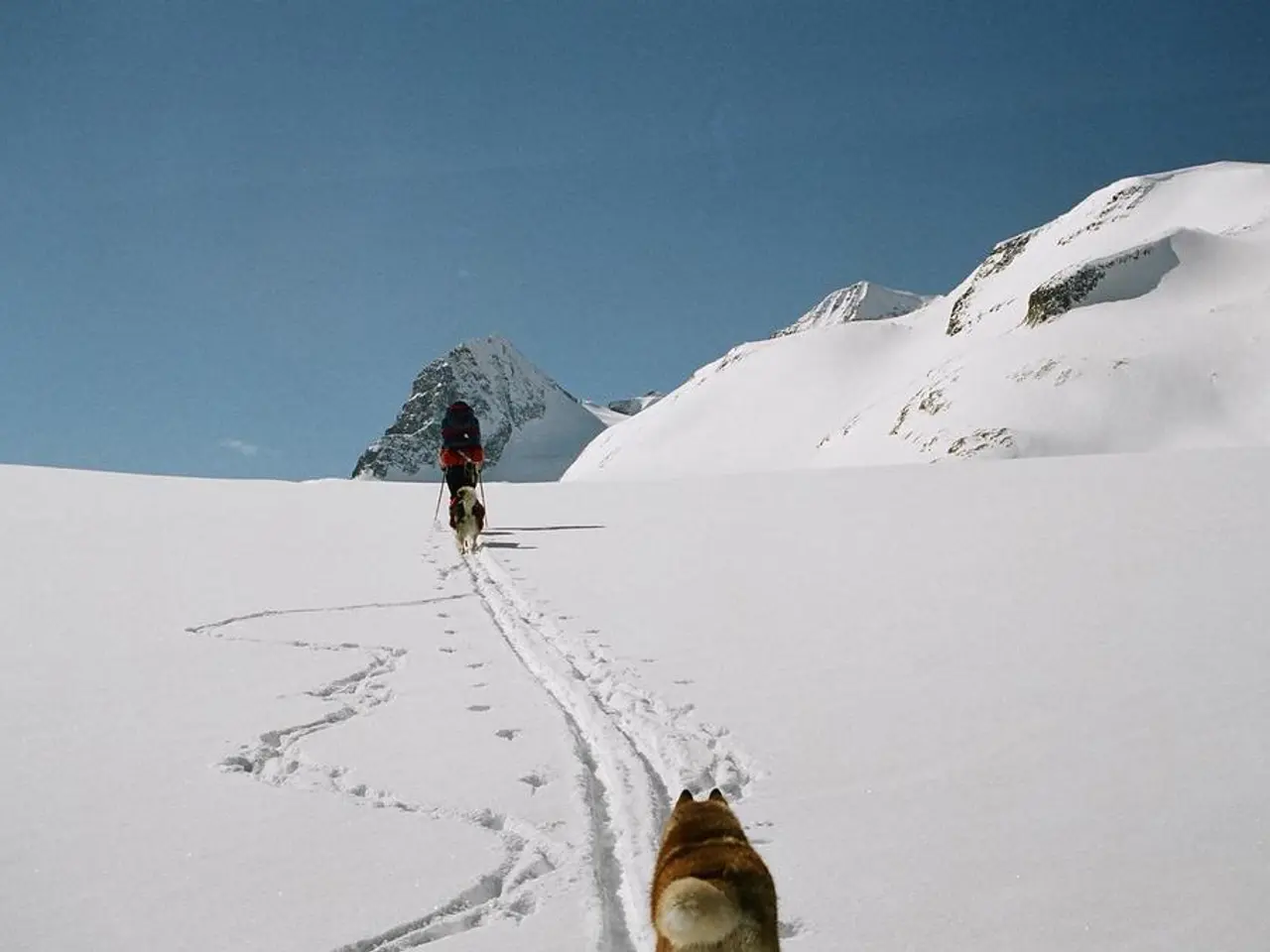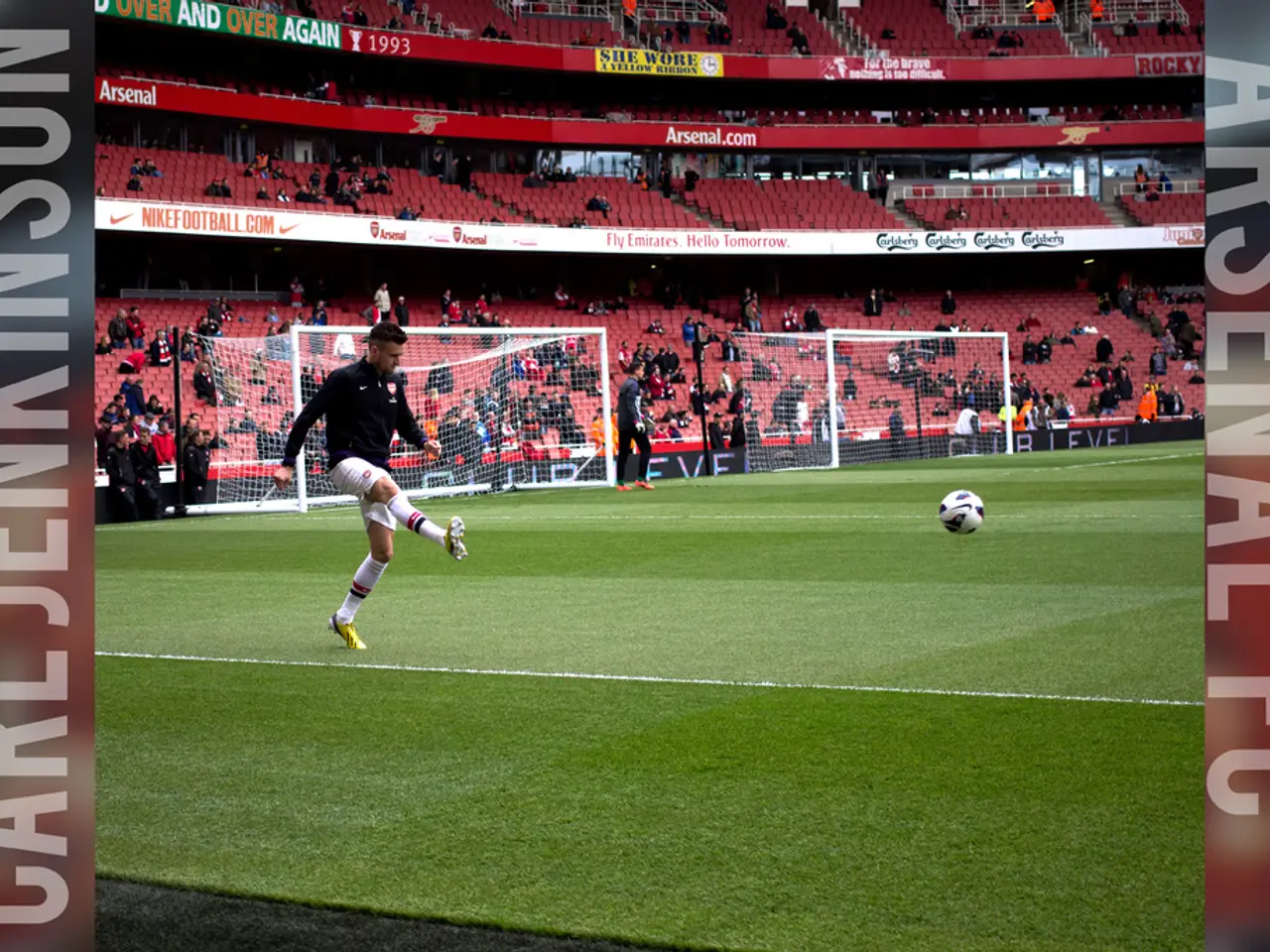Horse-drawn skiing, known as skijoring, made a sole appearance at the Winter Olympics in 1928. Despite its Olympic isolation, the sport continues to thrive in Europe and North America.
The Winter Olympics have seen a variety of demonstration sports over the years, some of which never made the cut as official events. These sports, while unique and intriguing, often failed to meet the criteria set by the International Olympic Committee (IOC) for inclusion.
Skijoring: A Crowd Favourite, Yet Never an Official Event
One such example is Skijoring, which made its debut as a demonstration sport in the 1928 Winter Olympics held in St. Moritz, Switzerland. A timed race where a skier is pulled by a horse, Skijoring originated in Scandinavia and was a crowd favourite. However, it never became an official event, likely due to its highly location- and tradition-specific nature, and the complications that come with involving animals in competition.
Ski Ballet: Freestyle Flair, But Not a Medal Event
Another demonstration sport that captivated spectators was Ski Ballet, also known as Acroski. First presented at the 1988 Calgary Games and again at the 1992 Albertville Games, this freestyle event combined spins, flips, and choreographed movements to music on skis. Despite its spectator appeal and recognition by the International Ski Federation (FIS), Ski Ballet was dropped in favour of other freestyle disciplines, such as moguls, due to judging subjectivity and a less clear competitive structure.
Military Patrol: A Precursor to Biathlon
Military Patrol, a precursor to biathlon, blended cross-country skiing, shooting, and mountaineering. It appeared briefly as a medal event (in 1924) and demonstration sport later but was eventually superseded by the biathlon, which is more standardized and accessible.
Skeleton: A Rollercoaster Ride with a Checkered Past
Skeleton, which initially was part of the Games due to the unique Cresta Run track, was removed because it was too niche, depended on a specific location, lacked safety and international standards, and had limited global infrastructure. Its permanent return required growth in worldwide participation and the development of artificial tracks.
Other Contenders: Bandandy, Dog Sledding, and Synchronized Ice Skating
Other sports that have been proposed but not adopted include Bandandy, a larger version of ice hockey played with a ball; Dog Sledding and Synchronized Ice Skating, which have been demonstrated occasionally to highlight local traditions but have not been widely accepted as official Olympic sports due to limited international competition or organizational difficulties.
The IOC's Criteria for Inclusion
The IOC tends to favour sports with broad international appeal, standardized rules, and clear competitive formats. This pattern reflects the Olympic movement’s emphasis on universality, spectator engagement, safety, and infrastructure feasibility.
Skijoring and Dog Sledding: Official and Demonstration Sports
Interestingly, the dog version of skijoring resembles a combination of cross-country skiing and dog sledding, which are both official and demonstration sports in the Olympics respectively.
Ski Ballet's Fate and Speed Skiing's Limits
Ski Ballet has not become an official medal event in the Winter Olympics, and speed skiing, despite its thrilling speeds, is not an ideal viewing experience on television. Both sports seem to cater more to niche, regional pastimes.
A Tragic Turn for Speed Skiing
The main reason speed skiing is not an official Olympic event is due to a tragic death during training at the Olympics.
Cross-Country Skiing: A Mainstay of the Winter Games
In contrast, cross-country skiing, an official medal event in the Winter Olympics, continues to be a popular and well-established sport in the Games.
Sources:
[1] Greenham, C. (2018). The Olympic Games: A History of the Modern Summer and Winter Games. Routledge.
[3] Wallechinsky, D. (2016). The Complete Book of the Winter Olympics. Infobase Publishing.
[5] Craig Greenham, an Olympic historian and professor of kinesiology at the University of Windsor in Ontario, Canada, has extensively researched the history of the Winter Olympics and the reasons behind the inclusion and exclusion of various sports.
- Despite the popularity it enjoyed during its demonstration appearances at the Winter Olympics, Skijoring, a horse-drawn racing sport, never met the criteria set by the International Olympic Committee (IOC) for becoming an official event due to its location-specific and tradition-based nature, and the complications that come with involving animals in competition.
- While Ski Ballet captivated spectators at the Winter Olympics with its freestyle flair of spins, flips, and choreographed movements, it was not accepted as an official medal event due to subjective judging standards and an unclear competitive structure that put it behind other freestyle disciplines like moguls.







